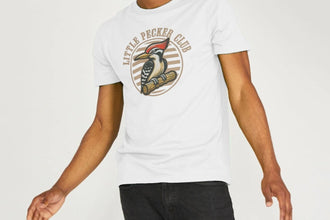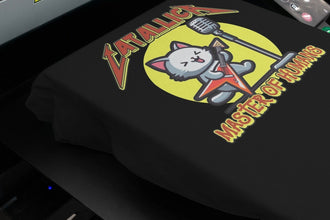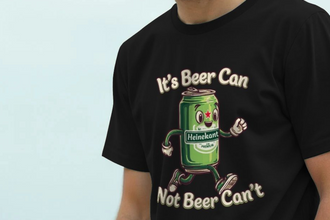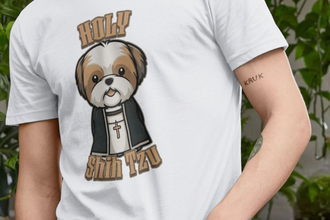
Working Class Heroes: The Representation of Class in British Comedy
Introduction: The Importance of Social Class in British Society and its Reflection in Comedy
Today, we're diving headfirst into the wonderfully wacky world of British comedy, with a magnifying glass firmly focused on one thing: class. Now, we all know that in Britain, class isn't just about how much dosh you've got in the bank – it's a whole shebang involving your accent, your postcode, and whether you prefer a cuppa with or without milk (controversial, we know!).
Here at Teevolution, we reckon comedy is like a mirror reflecting society back at us, warts and all. And when it comes to British society, class is one of those big, honking warts that's ripe for a good laugh (and maybe a bit of reflection too). From the music hall antics of yesteryear to the cutting-edge sitcoms of today, class has been a constant source of inspiration, conflict, and, most importantly, side-splitting humour.
So, grab a brew, settle in, and let's explore how British comedy has portrayed the working class over the years – from the downright daft caricatures to the surprisingly poignant and relatable characters that have captured our hearts. We're talking about the good, the bad, and the belly-laughingly brilliant – all while keeping our Teevolution promise of wit, sustainability, and a good old-fashioned giggle. After all, life's too short to be serious, innit? And what better way to celebrate our shared human experience than through the medium of a perfectly crafted, ethically sourced t-shirt and a healthy dose of British humour? Sorted!
II. Early Portrayals: Representations of Working-Class Characters in Music Hall and Early Sitcoms
Right, let's rewind the telly to the good old days, back when music hall was all the rage and sitcoms were just finding their feet. In these early portrayals, the working class often got a bit of a rough deal, to be honest. Think slapstick routines, exaggerated accents, and characters who were often the butt of the joke.
Music hall, with its larger-than-life performers and bawdy humour, frequently relied on stereotypes to get a quick laugh. Working-class characters were often depicted as simple-minded, clumsy, or even a bit daft. It wasn't always malicious, mind you, but it certainly wasn't the most nuanced portrayal.
Early sitcoms followed a similar path. Shows like "Hancock's Half Hour" (although, let's be honest, Tony Hancock was a breed unto himself) often featured working-class characters whose struggles and aspirations were played for comedic effect. While these shows undoubtedly had their moments of brilliance, they often lacked the depth and understanding that would come to define later working-class sitcoms.
The key takeaway here is that early portrayals of the working class in comedy were often simplistic and rooted in stereotypes. They served a purpose, sure, providing quick laughs and reflecting the social attitudes of the time. But as comedy evolved, so too did its portrayal of the working class. It was time for a Teevolution!
III. Iconic Working-Class Sitcoms: "Only Fools and Horses," "Steptoe and Son," "The Royle Family"
Now we're talking! This is where British comedy really started to hit its stride, delivering iconic sitcoms that not only made us laugh 'til our sides hurt but also gave us characters we genuinely cared about. Let's delve into three absolute belters: "Only Fools and Horses," "Steptoe and Son," and "The Royle Family."
First up, "Only Fools and Horses." Come on, who doesn't love Del Boy and Rodney, the hapless duo from Peckham who were always one dodgy deal away from becoming millionaires? This show was a masterclass in capturing the spirit of working-class ambition, even if that ambition was often misguided and hilarious. Del Boy's unwavering optimism, coupled with Rodney's perpetual pessimism, created a dynamic that was both funny and surprisingly touching. And let's not forget the legendary one-liners – "This time next year, we'll be millionaires!" – that have become part of the British lexicon.
Then we have "Steptoe and Son," a darker, more melancholic sitcom that explored the dysfunctional relationship between a rag-and-bone man, Albert Steptoe, and his ambitious son, Harold. This show was ground-breaking in its depiction of poverty and social immobility, while still managing to find humour in the everyday struggles of its characters. The cramped, cluttered setting of their scrapyard home perfectly reflected the limited opportunities available to them, making their story all the more poignant.
Finally, there's "The Royle Family," a sitcom that dared to be different by focusing on the mundane realities of working-class life. Set almost entirely in the living room of a Manchester family, the show captured the warmth, humour, and occasional squabbles of a family who loved each other, despite their flaws. The Royles weren't chasing riches or fame; they were simply trying to get through the day, one cup of tea and TV show at a time. And that, in itself, was incredibly relatable and funny.
What these three sitcoms have in common is that they humanized working-class characters, making them complex, relatable, and ultimately, endearing. They moved beyond stereotypes and gave us characters with hopes, dreams, and vulnerabilities – characters we could laugh with and, at times, even shed a tear for. Now that's what we call a Teevolution in comedy!
IV. The Use of Dialect and Accents: How Language Reinforces Class Identity and Creates Humour
Alright, listen up, because we're about to get all linguistic on ya! In British comedy, dialect and accents aren't just a way to identify where someone's from – they're a crucial tool for reinforcing class identity and generating humour. Think of it as the secret sauce that makes a sitcom truly authentic and hilarious.
From Del Boy's Cockney rhyming slang to Albert Steptoe's gruff London brogue, accents and dialects instantly paint a picture of a character's background and social standing. They can be used to highlight differences between characters, create misunderstandings, and, of course, generate plenty of laughs.
Take "The Fast Show" for example. Characters like Rowley Birkin QC, with his posh accent and rambling anecdotes, are hilarious because of their exaggerated upper-class mannerisms. Conversely, the "Suits You" tailors, with their thick northern accents and cheeky banter, rely on their working-class dialect to create a sense of camaraderie and humour.
The use of dialect and accents in British comedy isn't just about making people laugh, though. It's also a way of exploring the complexities of class identity and celebrating the diversity of British culture. It's a reminder that language is more than just a means of communication – it's a powerful symbol of who we are and where we come from. It's why we at Teevolution make sure our designs reflect the authentic voice of the people - we're not just selling t-shirts, we are selling a slice of British heart and humour.
V. Changing Stereotypes: How Working-Class Characters Have Evolved from Being Objects of Ridicule to Complex, Relatable Figures
Now, let's talk about progress, shall we? Over the years, the portrayal of working-class characters in British comedy has undergone a significant Teevolution. Gone are the days when they were simply the butt of the joke, caricatures designed to elicit cheap laughs. Instead, we've seen a gradual shift towards more complex, relatable figures who are treated with respect and understanding.
This change is partly due to a growing awareness of social issues and a desire to challenge outdated stereotypes. Comedians and writers have become more conscious of the power of comedy to both reflect and shape public opinion. They've started to use their platform to explore the realities of working-class life, including the challenges of poverty, inequality, and social mobility.
Shows like "Shameless," while certainly not for the faint of heart, offered a raw and unflinching look at a working-class family struggling to survive on the fringes of society. While the show was often shocking and controversial, it also humanized its characters, showing their resilience, their humour, and their deep love for one another.
This evolution in the portrayal of working-class characters is a testament to the power of comedy to challenge social norms and promote empathy. It's a reminder that laughter can be a powerful tool for social change.
VI. Contemporary Representations: How Modern British Comedy Addresses Issues of Poverty, Inequality, and Social Mobility
Fast forward to today, and British comedy is still grappling with issues of class, but in a way that's more nuanced and thought-provoking than ever before. Modern sitcoms and stand-up routines are tackling tough topics like poverty, inequality, and social mobility head-on, often using humour as a way to shed light on these important issues.
Shows like "This Country," a mockumentary about two cousins living in rural poverty, offer a poignant and often hilarious look at the challenges faced by those who are left behind by economic progress. The show's creators, Daisy May Cooper and Charlie Cooper, draw on their own experiences growing up in a small Cotswold village to create characters that are both funny and deeply sympathetic.
Stand-up comedians like Nish Kumar and Josie Long are also using their platforms to address issues of inequality and social justice. They use humour to challenge the status quo, raise awareness of important issues, and encourage their audiences to think critically about the world around them.
The key takeaway here is that modern British comedy is not afraid to tackle tough topics. It uses humour as a way to engage audiences, promote empathy, and spark conversations about the challenges facing society today.
VII. Conclusion: The Enduring Relevance of Class in British Comedy
So, there you have it, folks! A whirlwind tour through the world of British comedy and its enduring fascination with class. From the early days of slapstick stereotypes to the complex and nuanced portrayals of today, class has been a constant source of inspiration, conflict, and, of course, laughter.
But why is class such a recurring theme in British comedy? Well, as we've seen, class is deeply ingrained in British society, shaping our identities, our opportunities, and our perspectives on the world. Comedy, as a reflection of society, naturally gravitates towards these themes, using humour to explore the complexities and contradictions of class identity.
But class based comedy is not just about making us laugh, though. It's also about challenging stereotypes, promoting empathy, and encouraging us to think critically about the world around us. It's about reminding us that we're all in this together, regardless of our background or social standing.
Here at Teevolution, we believe that comedy has the power to unite us, to make us laugh at ourselves, and to help us see the world in a new light. And we're proud to be part of that tradition, creating t-shirts that are not only stylish and sustainable but also witty and thought-provoking.
After all, life's too short to be serious. So, let's raise a glass (or a cuppa) to British comedy, to the working class heroes who have entertained us for generations, and to the power of laughter to make the world a better place. And don't forget to check out our latest Teevolution collection – because what better way to celebrate your love of British comedy than with a tee that's as funny as it is ethically made? Sorted!











